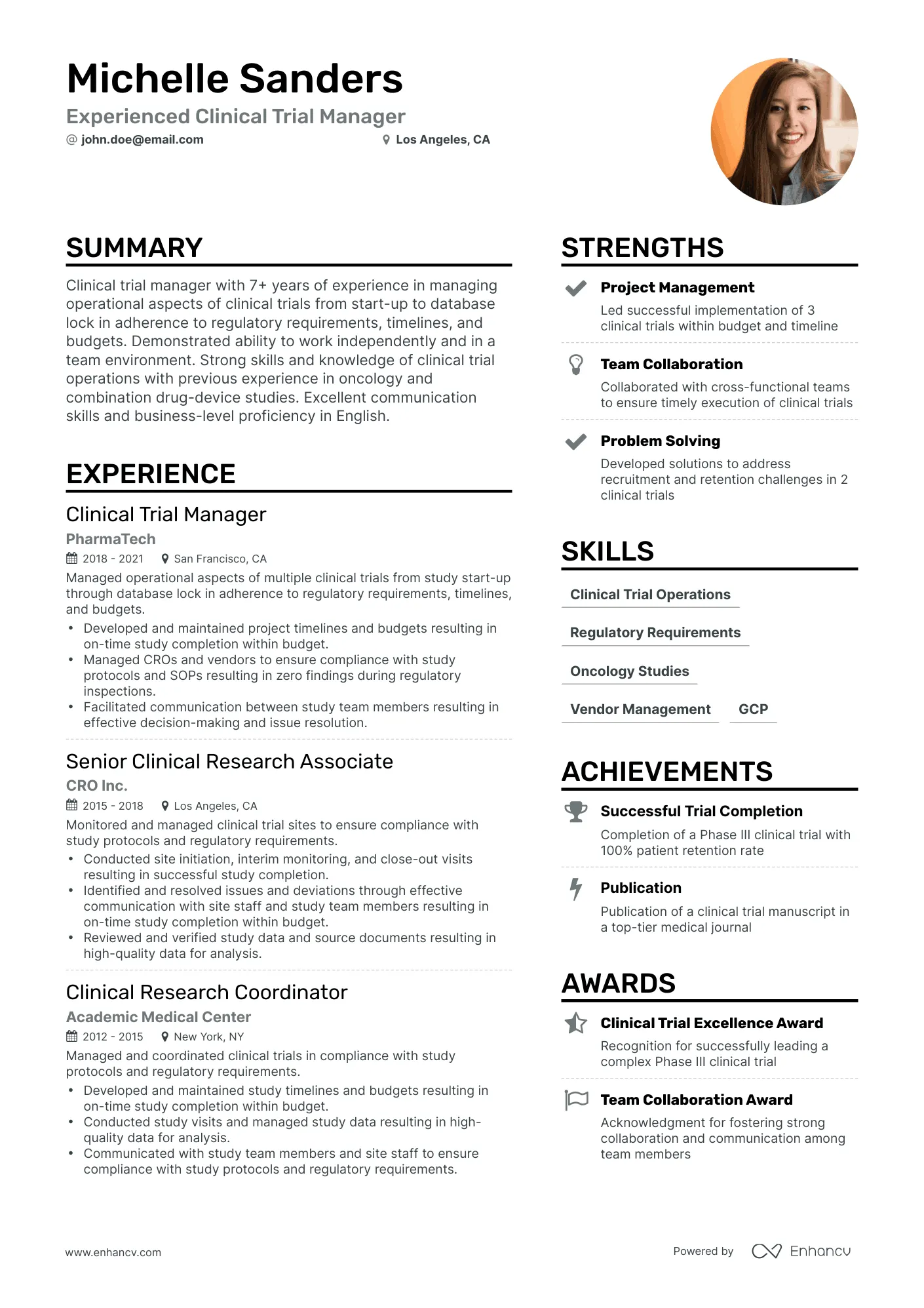Know Your Cover Letter: Clinical Trial Manager
A Clinical Trial Manager (CTM) cover letter is a crucial document when applying for positions in the clinical research field. It serves as your first introduction to a potential employer, providing an opportunity to showcase your qualifications, skills, and enthusiasm for the role. Unlike a resume, a cover letter allows you to tell a story, explaining why you are the ideal candidate and how your experience aligns with the specific requirements of the job. It’s not just a summary of your resume; it’s a chance to demonstrate your personality, communication skills, and understanding of the position. A well-crafted cover letter can significantly increase your chances of securing an interview, setting you apart from other applicants and demonstrating your genuine interest in the opportunity.
Why Is a Cover Letter Important?
In the competitive field of clinical research, a cover letter is not just an optional formality; it’s a necessity. It provides context to your resume, explaining your career trajectory, motivations, and what makes you unique. Recruiters often look at cover letters to assess your writing skills, attention to detail, and overall communication ability. A cover letter allows you to highlight specific achievements and experiences that directly relate to the job requirements, which might not be immediately apparent from your resume alone. For a Clinical Trial Manager role, it’s essential to demonstrate your understanding of clinical trial processes, regulatory requirements, and project management skills. A compelling cover letter can capture the hiring manager’s attention and make them eager to learn more about you.
Tailoring Your Clinical Trial Manager Cover Letter
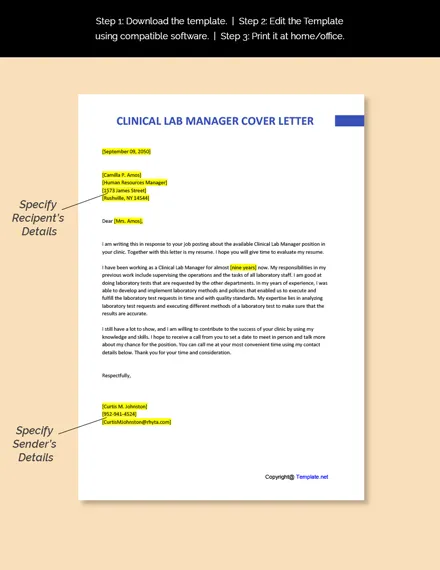
Generic cover letters rarely impress hiring managers. Customizing your cover letter for each application is a must. Begin by carefully reading the job description and identifying the key skills, experiences, and qualifications the employer seeks. Then, align your cover letter with these requirements. Highlight relevant experiences and accomplishments that directly address the needs of the role. Use the same keywords and phrases from the job description to show that you understand the position and are a good fit. Research the company and mention why you are interested in working there specifically. Demonstrating that you’ve taken the time to understand their mission, values, and projects will make your application stand out.
Key Components of a Cover Letter
A well-structured cover letter typically includes several key components that work together to create a persuasive argument for your candidacy. These components include contact information, a professional salutation, a compelling introduction, a skills and experience section, an expression of enthusiasm, and a strong closing. Each section plays a vital role in conveying your message and persuading the hiring manager to consider your application. Ensure that the structure is clear, concise, and easy to read. Avoid jargon and use language that is appropriate for a professional setting. Proofreading your letter is also crucial to catch any errors that could detract from your overall message.
Contact Information
At the top of your cover letter, include your contact information, such as your name, phone number, email address, and LinkedIn profile URL. This information should be easily accessible to the hiring manager, making it simple for them to reach out to you. Ensure that the email address you provide is professional and appropriate for a job application. Make sure your voicemail is set up and professional as well. Keep your phone number updated and active, ready for a call.
The Hiring Manager’s Name
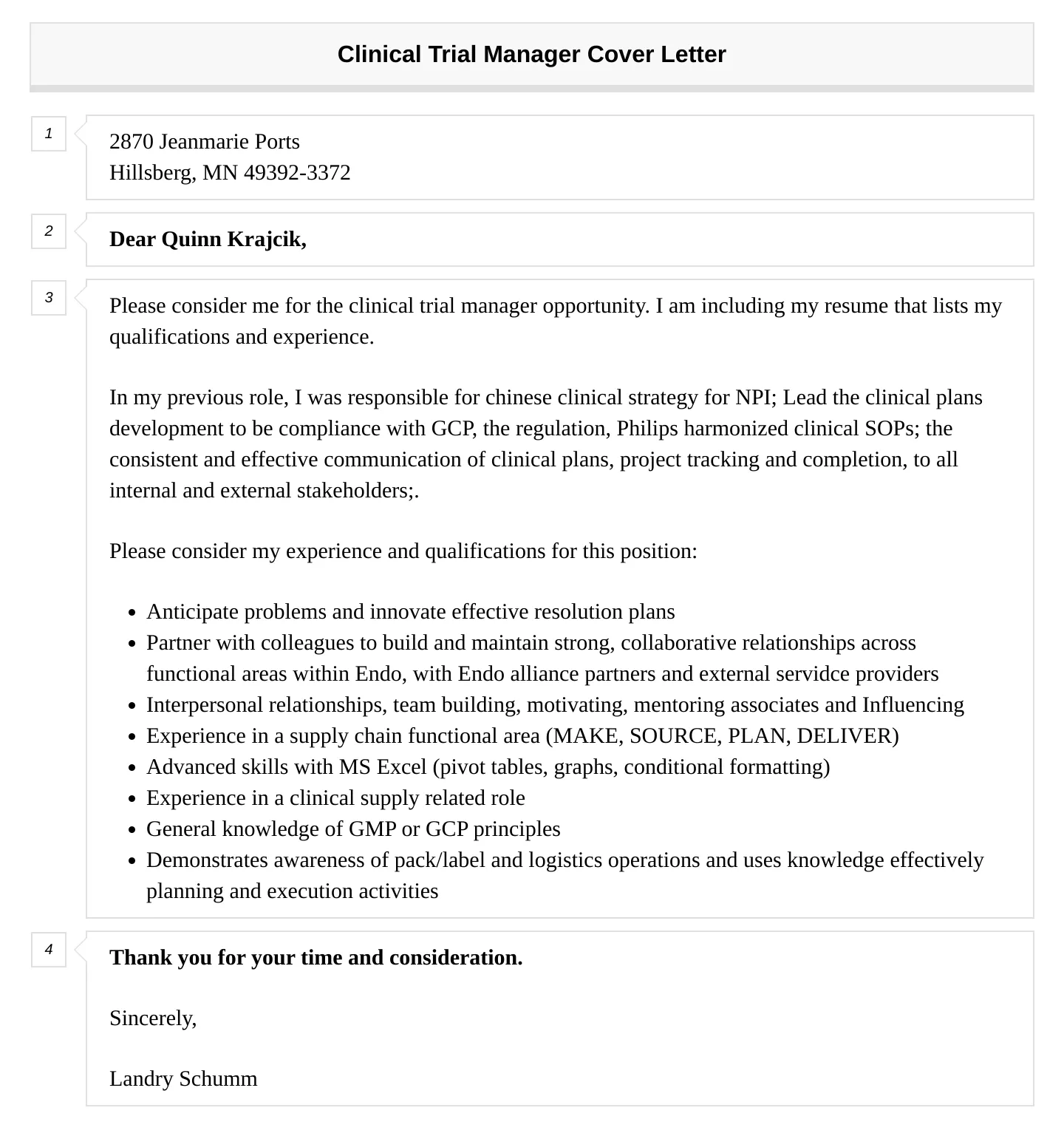
Addressing your cover letter to a specific person shows that you’ve done your research and are genuinely interested in the position. Whenever possible, find out the hiring manager’s name. This shows initiative and attention to detail. If the name is not provided in the job posting, try researching the company’s website or LinkedIn to find the appropriate contact. If you can’t find a specific name, use a professional salutation like ‘Dear Hiring Manager’ or ‘Dear [Department Name] Team’. Avoid generic greetings like ‘To Whom It May Concern’.
Professional Salutation
Your salutation sets the tone for your entire cover letter. Use a formal and respectful greeting such as ‘Dear Mr./Ms./Dr. [Last Name]’ if you know the hiring manager’s name. If you don’t know the specific person, use ‘Dear Hiring Manager’ or ‘Dear [Department Name] Team’. Avoid informal greetings like ‘Hi’ or ‘Hello’. Ensure the salutation matches the tone of the rest of your letter, maintaining a professional and courteous style throughout.
Introduction: Grab Their Attention
Your introduction should immediately capture the hiring manager’s attention. State the position you are applying for and briefly explain where you found the job posting. Then, succinctly highlight why you are a good fit for the role. Consider including a brief statement about your passion for clinical research or a key achievement that aligns with the job requirements. The goal is to create intrigue and motivate the reader to continue reading the rest of your cover letter. For example, you might mention your years of experience in clinical trial management and your success in leading successful clinical trials within budget and on time.
Highlight Your Skills and Experience
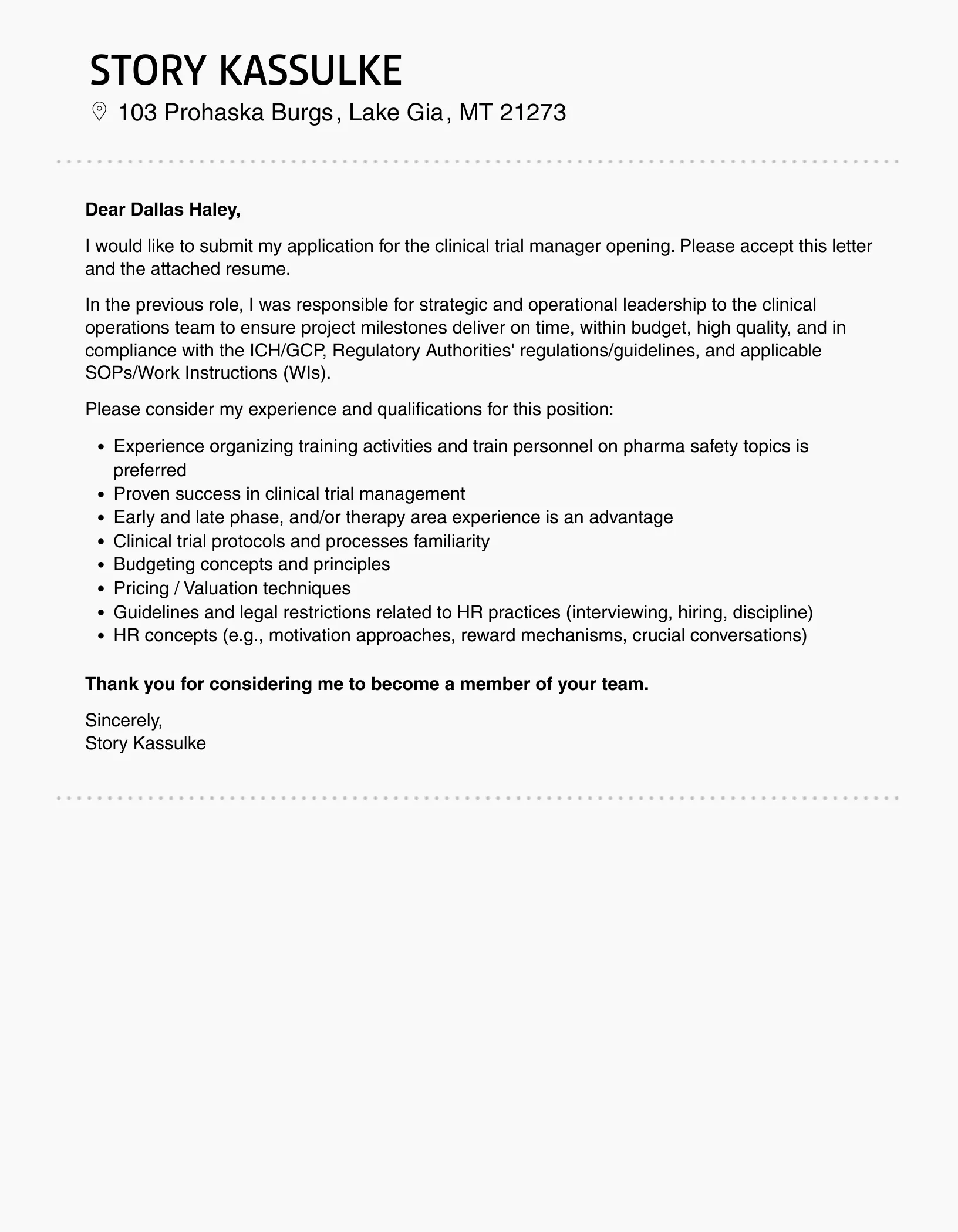
The main body of your cover letter is where you showcase your skills and experience. Focus on the most relevant aspects of your background, aligning them with the job requirements. Use specific examples to demonstrate your abilities. Instead of simply listing your responsibilities, provide concrete evidence of your accomplishments. Use the STAR method (Situation, Task, Action, Result) to structure your examples, making them clear, concise, and impactful. This method helps you present your achievements in a narrative format, showing how you handled challenges and achieved positive outcomes.
Showcase Relevant Experience
Focus on the clinical trial management aspects of your experience. Describe your previous roles and responsibilities, emphasizing those that align with the requirements of the target position. Mention your experience in protocol development, site management, data management, and regulatory compliance. Highlight any experience with specific therapeutic areas or types of trials. Provide quantifiable results to demonstrate your success in these areas. For example, you could mention how you successfully managed several Phase III clinical trials from start to finish, ensuring adherence to timelines, budgets, and regulatory requirements.
Quantify Your Achievements
Whenever possible, quantify your achievements to provide tangible evidence of your impact. Use numbers and metrics to demonstrate your success. For example, instead of saying you ‘managed clinical trials,’ say you ‘managed a portfolio of 5 clinical trials with a combined budget of $10 million, resulting in a 15% reduction in site initiation timelines.’ Quantifying your achievements shows your ability to drive results and your understanding of the business aspects of clinical trial management. Use specific data to show how you improved efficiency, reduced costs, or improved patient outcomes. Make your accomplishments measurable and easy to understand.
Address the Job Requirements
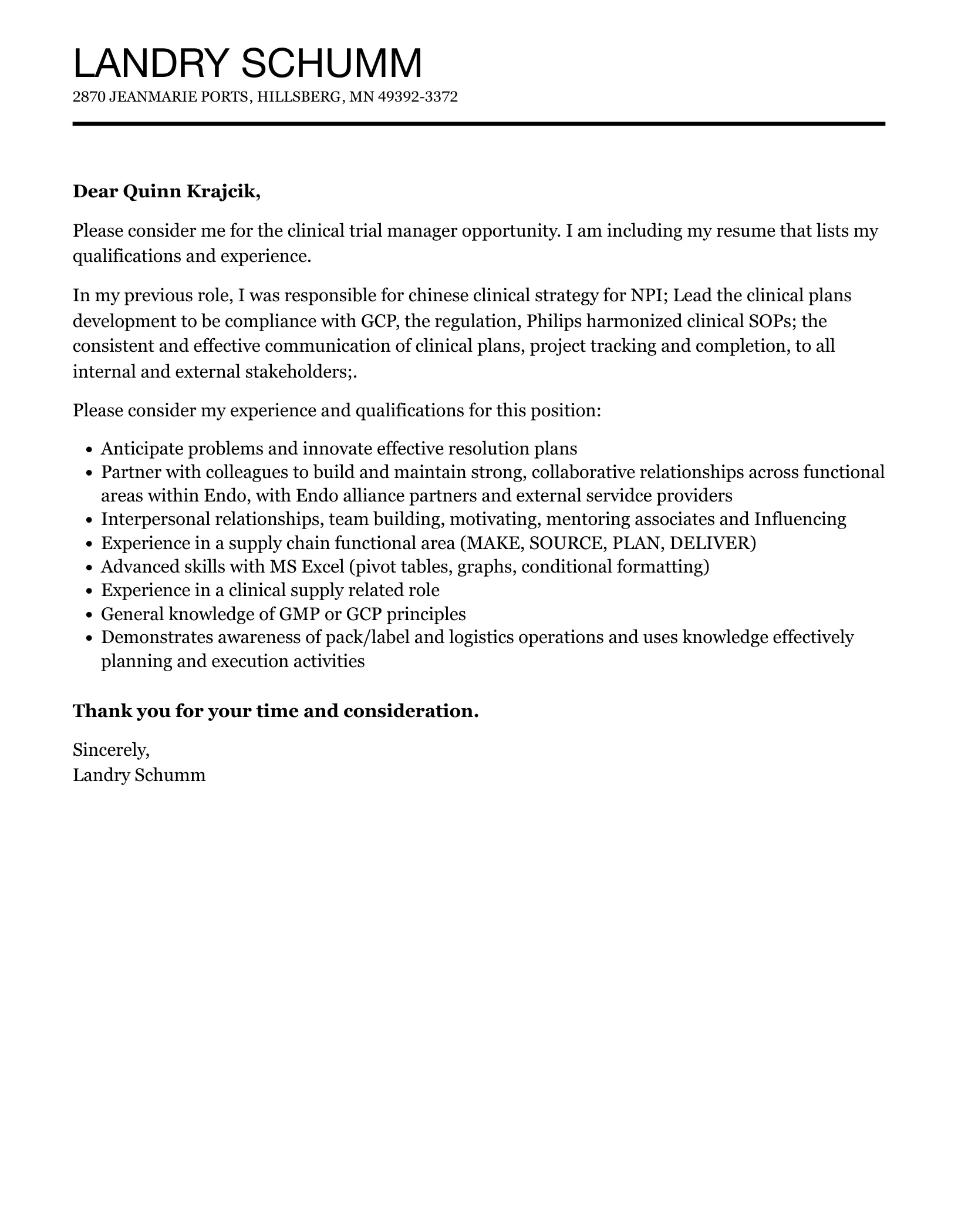
Carefully review the job description and address the specific requirements outlined by the employer. This demonstrates that you understand the role and have the necessary skills and experience. Highlight how your experience aligns with the specific needs of the position, using the same keywords and phrases from the job description. If the job requires experience with specific software or regulations, ensure you mention your proficiency. Show the hiring manager that you have the precise qualifications they are looking for.
Focus on Clinical Trial Management
Emphasize your expertise in clinical trial management. Describe your experience in managing all aspects of the trial process, from planning and execution to data analysis and reporting. Highlight your proficiency in project management, risk management, and budget management. Demonstrate your ability to work collaboratively with cross-functional teams, including investigators, research coordinators, and regulatory agencies. Showcase your understanding of regulatory requirements and your experience in ensuring compliance. Your letter should establish you as a skilled professional in clinical trial management.
Mention Relevant Certifications
If you hold any relevant certifications, such as a Certified Clinical Research Professional (CCRP) or a Project Management Professional (PMP), be sure to include them. These certifications demonstrate your commitment to the profession and your expertise in specific areas. List your certifications and mention the issuing organization. Highlighting your certifications validates your skills and shows that you have invested in your professional development. Place your certifications in a dedicated section or mention them within the context of your skills and experience.
Express Enthusiasm and Interest
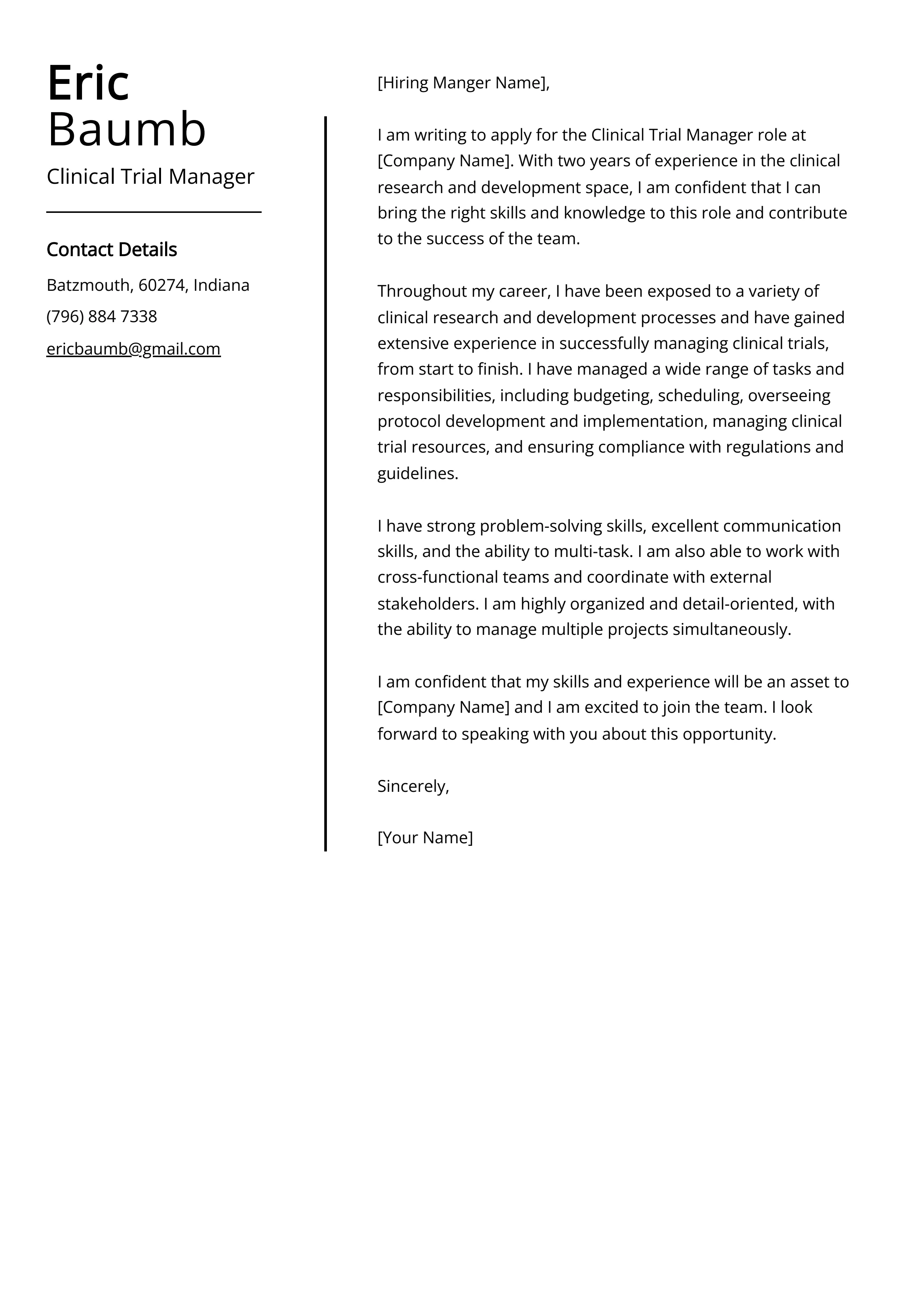
Show genuine enthusiasm for the role and the company. Explain why you are interested in the specific opportunity and what attracts you to the organization. Mention any specific projects or aspects of the company’s work that resonate with you. Research the company’s mission, values, and recent accomplishments to show that you’ve done your homework. Your enthusiasm can set you apart from other applicants and make you seem more appealing to the hiring manager. Expressing your excitement shows that you are invested in the opportunity.
The Closing: Call to Action
Your closing should include a call to action, prompting the hiring manager to take the next step. State that you are eager to discuss your qualifications further and are available for an interview. Make it easy for the hiring manager to contact you. Reiterate your interest in the position and express your confidence in your ability to contribute to the company’s success. Keep the closing brief and to the point, showing your professional interest.
Express Gratitude
Always express your gratitude to the hiring manager for considering your application. Thank them for their time and attention. This shows respect and professionalism. A simple ‘Thank you for your time and consideration’ is sufficient. This final touch leaves a positive impression and reinforces your commitment to the position.
Proofread and Edit
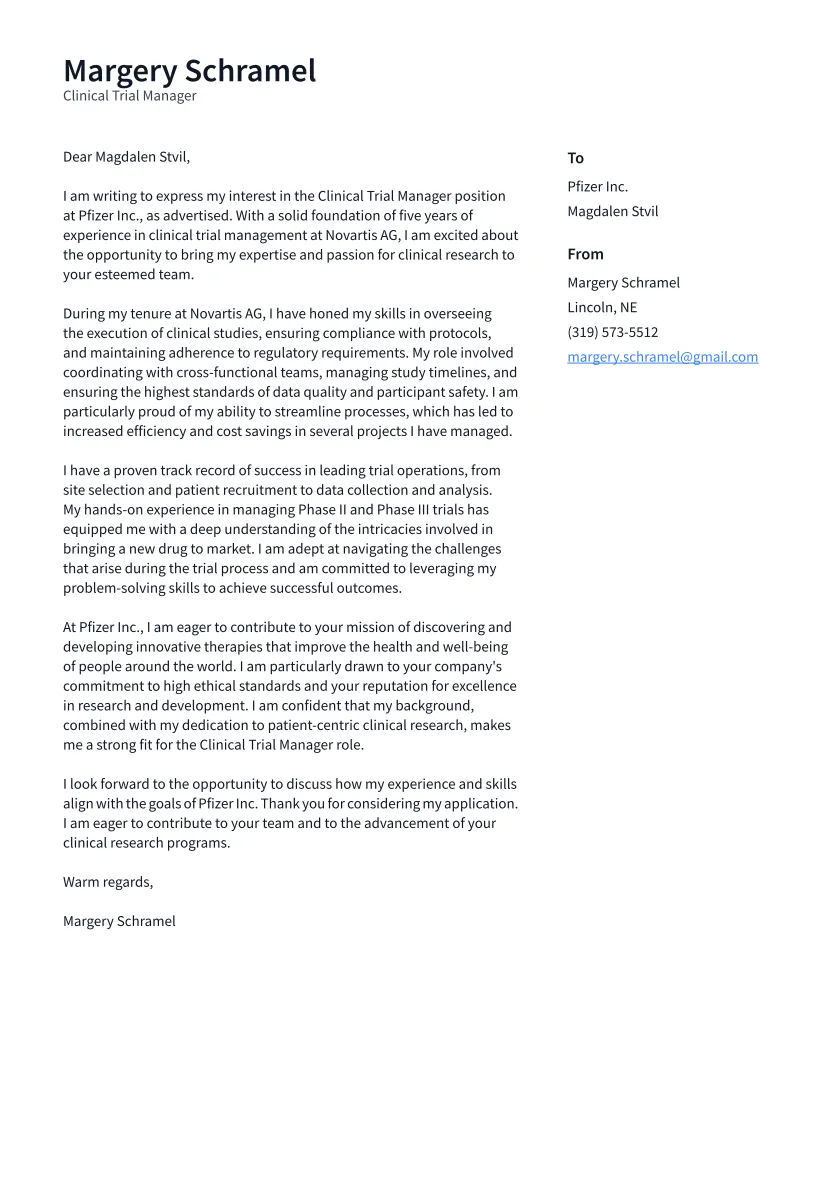
Before submitting your cover letter, meticulously proofread and edit it to eliminate any errors in grammar, spelling, or punctuation. Errors can undermine your credibility and make you seem careless. Read your letter aloud to catch any awkward phrasing or unclear sentences. It’s also helpful to have a friend or colleague review your cover letter for clarity and accuracy. A well-written, error-free cover letter is essential for making a positive first impression.
Cover Letter Examples for Clinical Trial Managers
Reviewing examples of successful cover letters can provide valuable insights and guidance. Search for cover letter templates and examples specifically tailored for Clinical Trial Manager roles. Pay attention to the structure, language, and content used in these examples. Customize the examples to reflect your own experiences and qualifications. Be careful not to plagiarize and ensure your cover letter is original and unique to you. Adapt the example to fit the job requirements and your personal achievements.
